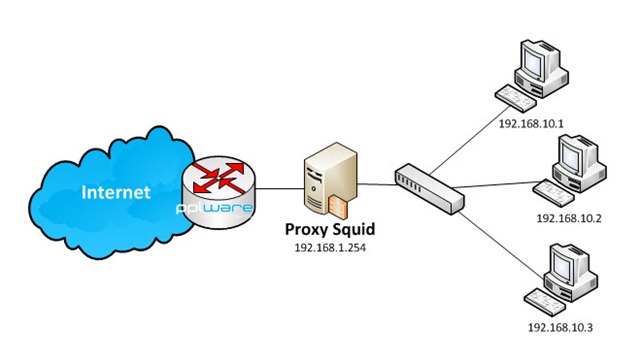
How To Install Cgi Proxy Service
Privacy is a perennial hot topic online. Many internet users have no idea how to safeguard their information, but savvy web professionals can implement an HTTPS proxy server to do the job.
An HTTPS proxy server you to maintain your privacy while still being able to browse the internet unrestricted. This alone is a major selling point. Plus, connecting to HTTPS through proxy can bring even more benefits, and can easily become a vital part of your development workflow.
In this piece, we’ll first answer the question: What is a proxy server? We’ll then discuss what you’ll need to get one up and running, before showing you how to set up a proxy server of your own. Let’s get started!
May be you need to consider usinghttpport directive with ssl-bump and not httpsport, since you have your browsers configured with proxy (CONNECT method). Intercept mode is appropriate for transparent proxy (no browser settings needed), when packets are automatically forwarded to the proxy using iptables. I am trying to setup squid3 as an HTTPS proxy using the tutorial given here. I have properly setup the proxy settings in my browser and when I try to hit HTTP web sites, I am able to connect succes.
What is a proxy server (and why you need one)
In layman’s terms, a proxy server acts as a “middleman” between your browser and the website you’re visiting. It can get complex under the hood, but you don’t need to know too much about how it works to carry out day-to-day tasks. You should know that, much like with any other website, the data a proxy server passes along can also be encrypted by HTTPS.
There are definite benefits to using HTTPS through proxy, starting with the privacy and anonymous browsing it offers. However, an HTTPS proxy server can help you with many more things, including security and ad blocking functions, geolocation testing, and even caching.
Rather than seeing it simply as a way to obfuscate your online identity, you can view your HTTPS proxy server as a valuable development tool.
With that in mind, let’s take a look at what you’ll need to get started.
The essential elements you’ll need to set up an HTTPS proxy server
While on the surface setting up an HTTPS proxy server might seem costly, it can be actually quite cheap to implement one. The first element you’ll need is a suitable web host with the following traits:
- An Apache server with at least PHP 5 installed, along with cURL support.
- Write access to public_html.
- The ability to set up a proxy.
(Fortunately, GoDaddy’s Business Hosting, VPS, and Dedicated Server hosting plans meet these requirements.)
Moving on, you’ll need a way to encrypt the data that passes through your proxy. Much like with a standard website, you’ll need to employ a suitable SSL certificate. There are many options and vendors available, and you can find a plethora of different certificates at competitive prices.
Finally, you’ll need a suitable proxy script. They’re usually coded with PHP, and a quick Google search will uncover a wealth of choices. However, beware: free scripts are sometimes released by developers with ulterior motives, so you should carefully consider your options. That said, both Glype and Squid are suitable free proxy scripts, and the latter is also a stellar proxy caching solution.
Five steps to set up an HTTPS proxy server
Once you’ve gathered what you’ll need to create your HTTPS proxy server (and made sure your server is suitably prepared), the final step is performing the actual setup. Fortunately, this process should be simple for most web professionals.
1. Set up a subdomain with SSL
Set up a subdomain, and make sure your SSL certificate is up and running for that particular URL.
2. Download your proxy script
Download your chosen proxy script and unpack the compressed archive file if necessary.
3. Upload files to subdomain’s folder
Upload the files via File Transfer Protocol (FTP) to the subdomain’s folder. If you have no preferred FTP manager, we recommend FileZilla. Kannada fonts for prajavani.
4. Tweak subdomain admin settings
Browse to the proxy subdomain’s administration screen (usually by appending your URL with admin.php), and tweak the settings as appropriate based on your requirements and chosen proxy script.
5. Check for security signals
Finally, check that you can see the indicators of a secure website: the green padlock and the https:// designation in the browser bar.
That’s all it takes. All being well, you should have a working, secure HTTPS proxy server up and running in around 15 minutes!
Conclusion
While online privacy continues to be a pressing issue, there’s no quick and easy way to protect your online movements while not restricting your options. However, for the skilled web professional, connecting to HTTPS through proxy is probably your best bet.
In this article, we’ve discussed what an HTTPS proxy server is, and explained why you’d want one. We then walked you through the elements you’ll – including proper hosting and a suitable PHP script – before finally showing you how to set up a proxy server. By following our advice, you should be up and running in minutes.
Image by: VisualHunt.com